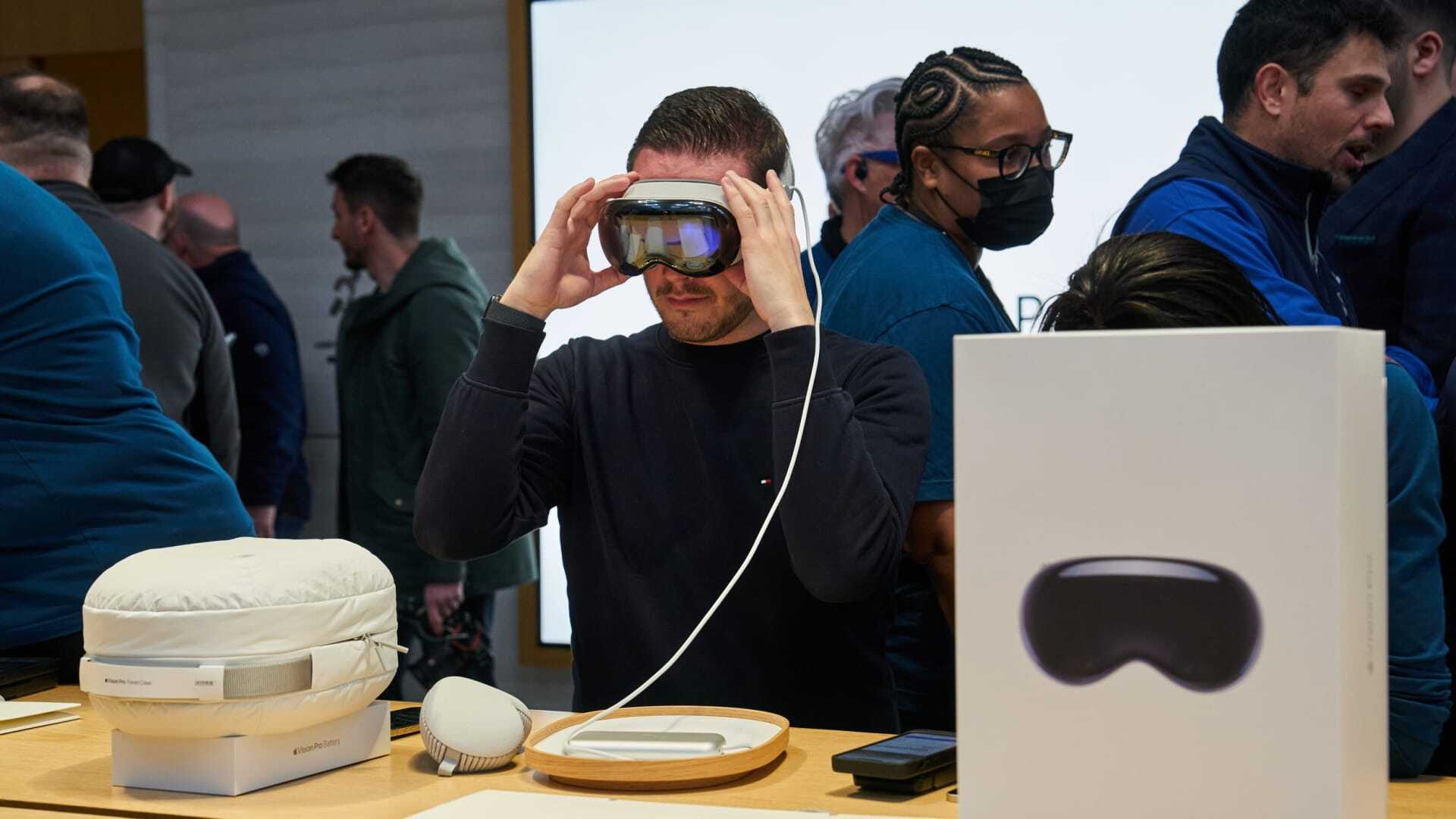- | 8:00 am
Why the Vision Pro is still no match for your computer
Spatial computing devices can’t compete with the resolution and information density of a laptop or desktop PC, and history suggests they may never fully replace them.

Apple promised the world a “revolutionary spatial computer” when it unveiled its Vision Pro headset at its annual WWDC developer conference in June of 2023. Twelve months later, and five months after the device became commercially available, the Vision Pro has arguably been a mixed bag for the company, and an imperfect solution for people looking to replace their laptop or desktop PC with groundbreaking new technology.
The Vision Pro has received high praise from Apple enthusiasts and some VR insiders, but it’s been not much of a commercial success for a company used to sell tens of millions of devices per quarter. Apple now expects to sell fewer than 500,000 Vision Pros this year, according analyst Ming-Chi Kuo, as in-store sales of the device have reportedly slowed down to a trickle. Used Vision Pros are currently available for as little as $2,400 on Ebay.
A key problem preventing the $3500 device from being more popular: It’s not actually a better computer for most people. A number of early adopters have returned the Vision Pro after experiencing headaches and eye strain, while others concede that working on a laptop is simply more comfortable and efficient.
All of that is no surprise to Karl Guttag, a former chip designer turned AR and VR optics expert who has meticulously analyzed the capabilities and shortcomings of the Vision Pro on his blog. “I don’t see how it works well as an office product,” Guttag says. For most work-related use cases, a traditional computer with a big monitor is simply a better solution, he argues, adding: “If you have a two-monitor setup, it’s not even a contest.”
Apple is not the only company pitching AR and VR as the future of work, and headsets as a replacement for laptops and desktop PCs. Meta stumbled when it tried to sell a $1500 Quest Pro to professional audiences; the company subsequently cut the price of the headset by $500, and more recently removed some key features from its VR productivity app.
Undeterred, Microsoft recently announced that it would enable developers to build spatial versions of Windows apps for Quest headsets. And just last week, Israel-based startup Sightful unveiled the Spacetop G1, a laptop that comes with a tethered pair of AR glasses instead of a traditional monitor. “It’s a 100-inch laptop that fits in your bag,” says Sightful CEO Tamir Berliner, referring to the approximate size of the virtual display that can be accessed with the laptop’s AR glasses.
The Spacetop is an interesting piece of technology that looks a bit like a mashup between a traditional laptop and an iPad case with integrated keyboard, with a pair of AR glasses permanently connected via a USB cable. The glasses themselves do offer a clear and bright view of the computer’s desktop environment, with one notable shortcoming: A limited field of view requires users to frequently move their head to take in the entirety of that promised 100-inch screen. It’s an issue Berliner readily acknowledges.
“What the field view allowed us to do is to get the text to be the [best-legible] text any XR platform has,” he says. “It’s a trade-off. Do you want a wide field of view or do you want crisp text?”
Guttag is very familiar with these kinds of trade-offs. “I often say: You get one wish,” he quips. Companies have to decide whether they want to optimize for legibility, comfort or immersion when they build AR or VR devices. Perfecting all of those factors at the same time is simply not possible at this point, Guttag believes. “You’ve got to focus on the doable,” he says. “You can’t violate the laws of physics.”
That’s especially true for 3D displays strapped to people’s faces. Apple’s Vision Pro headset includes two micro-OLED displays with a resolution of 3660×3200 pixels each, resulting in a nominal total resolution of 23 million pixels. That resolution is unrivaled among standalone VR headsets, and arguably makes for a great entertainment consumption experience.
However, a virtual monitor shown by the Vision Pro only makes use of a subset of those pixels, and rendering 2D text in a 3D environment comes with additional challenges. Guttag explains that it forces people to magnify text more than they would on a traditional 2D screen, and ultimately have to turn their head more often. “The information density is not there,” Guttag says. “That’s where I think the fall-off is going to be on productivity.”
There are some lessons in Apple’s past for any company looking to replace traditional computers with headsets or glasses. The iPad, and tablets in general, was once seen as a potential replacement for laptops. But while tablets have gotten a lot more powerful over the years, Mac sales have remained stubbornly strong. In fact, the segment rebounded close to a decade ago, and has generated more revenue for Apple than iPad sales every single year since 25.
That’s not to say that the iPad failed. It’s still an enormously popular device, thanks in part to a much more affordable price point. Apple used to sell more than two iPads for every Mac for years (the company stopped reporting unit sales of its products in 2019), and iPads have generated close to $280 billion in revenue for the company over the past decade. iPads just never replaced laptops or desktop PCs for most people – and neither may VR headsets.






































